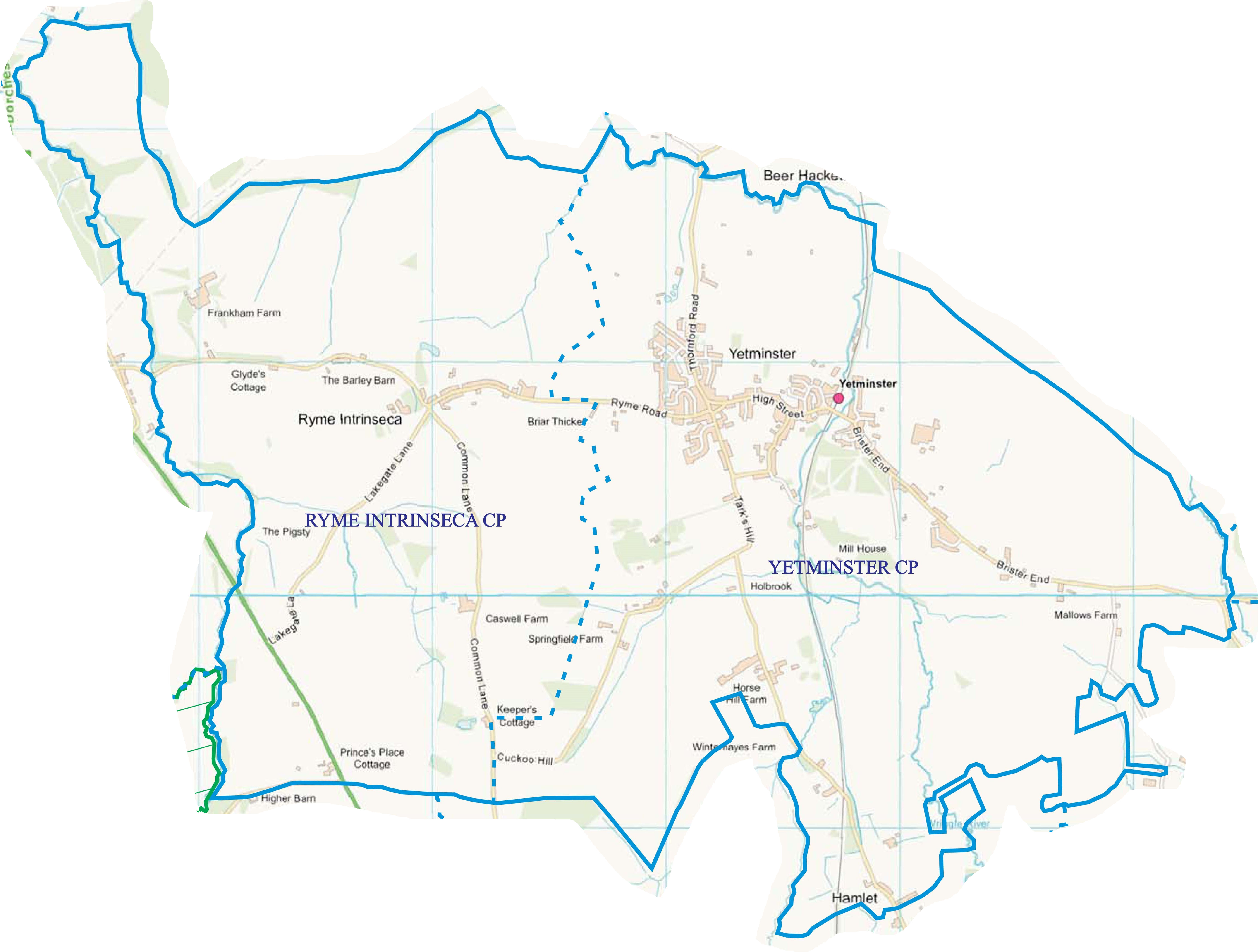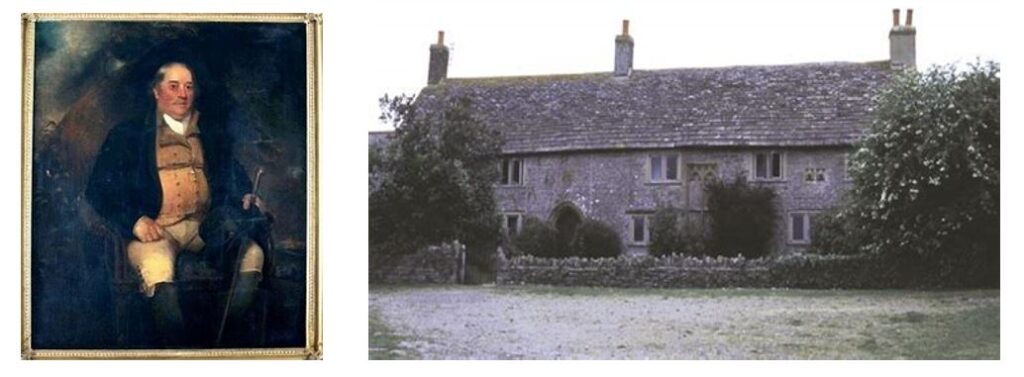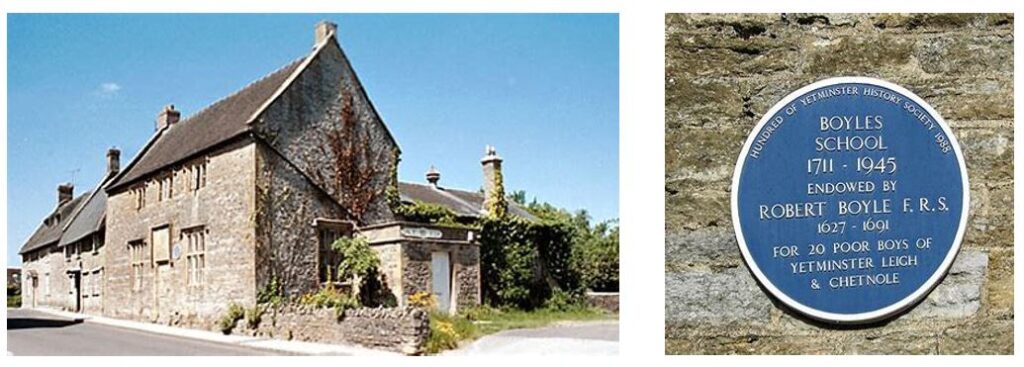About Us
The Parishes of Yetminster & Ryme Intrinseca
Yetminster & Ryme Intrinseca consists of two parishes in West Dorset with a single Parish Council for the purposes of administration and statutory functions. Sherborne is about six miles north-east, Yeovil six miles north-west and Dorchester 15 miles south.
There are 3 communities within the 2 parishes – Yetminster (the principal community), Ryme Intrinseca and Hamlet and together they have a combined population of 1,105 people (2011 Census).
The name Ryme Intrinseca is thought to come from the Saxon word “Rima”, which means edge or rim and refers to the village in relation to a range of hills to the south with Intrinseca meaning “inside”. In mediaeval times a nearby village of Ryme Extrinseca was associated with the manors of Long Bredy and Langton Herring, and “Extrinseca” is thought to mean “outside” although the name has long since disappeared.

The communities have a distinctive local character dating back to Saxon times. They are surrounded by open countryside punctuated by scattered woods and the valley of the River Wriggle with its feeder streams. In the east and south, higher ridges provide attractive views, where a network of footpaths and other rights of way are used by local walkers and visitors.
Historically the main local business has been, and continues to be, farming. The arrival of the railway in Yetminster resulted in a thriving local dairy industry with farmers getting their milk to market by rail although this declined and ceased after the second world war. The Dairy transhipment facility is now a small local business estate.
There are over 65 listed buildings in the two parishes including the grade I Parish Church of St Andrew, the grade II* Manor House and Upbury Farm House in Yetminster. These buildings are of special interest, as are the grade II listed Boyle’s School, the White Hart Public House, Rock House, the Old Court House; Manor Farm House, Gable Court and Cross Farm House.
The predominant building material is limestone, with local Forest Marble and Cornbrash stone being used for rubble walls and roofing tiles and Hamstone for ashlar and dressings. The older buildings have stone mullioned windows with casements, often leaded. Door surrounds are mainly stone with stone lintels or flat arches. Roofs are a variety of stone tiles, slate and clay tiles.
Yetminster is a request stop on the Heart of Wessex (Bristol to Weymouth) railway line and there is a bookable community bus serving both parishes on specified days to both Yeovil and Sherborne.
Amenities within the two parishes are mostly within Yetminster and include a Health Centre and pharmacy; St Andrew’s Primary School and an attached play group; a Montessori Nursery, a Veterinary Practice; a Village Store and post office; a cafe and Art Gallery and an Antiques warehouse. The small business site has a Joinery, Garage and associated ancillary works, Carpet Business, and an Animal Feed Store all serving local needs.
To the east of Yetminster is a Sports Club with sports field including a dedicated croquet area and tennis court. Adjoining this are Allotments together with a Scout Hut and Children’s Playground close by. Also, further east is a recreational wood planted by The Woodland Trust to commemorate the Millennium.
The Parish Church of St Andrew’s, which being at the highest point in Yetminster dominates the village, is the ‘mother’ church of the Wriggle Valley Benefice. There is also a Methodist Chapel and a further church in Ryme Intrinseca. Part of this latter church dates back to the 13th century and it is one of only two in England that is dedicated to St Hippolyte, the other being near Hitchin in Hertfordshire.
In addition to these amenities there are numerous village clubs and societies which help to contribute to thriving village communities.
Pictures and a slide show of the villages in the parishes can be viewed here
Claims to Fame
Benjamin Jesty (1736-1816)

Jesty, a local farmer who lived in Upbury Farm in Yetminster, realised in 1774 that his milk girls did not get the deadly smallpox virus because they had caught cowpox from the cattle. Using pus taken from lesions on a cow’s udder, Jesty used a stocking needle to scratch the infected material into the skin of his wife and two sons in effect “vaccinating” them and some 20 years before Jenner. A WHO representative has described Yetminster as “the birthplace of modern medicine”.
Link to BBC article on Jesty
Sir Robert Boyle (1621-1697)

Boyle is largely regarded as the first modern chemist and one of the pioneers of modern experimental scientific method. He is best known for Boyle’s Law, which describes the relationship between pressure and the volume of a gas. After his death, various Educational Foundations were set up in his name one of which was for “the for the education of the poor and needy of Yetminster” and a School (Boyles Old School) was built in Yetminster High Street in 1697. Although the school building is now used as a gallery and café the Foundation is still active and regularly helps local young people with their educational needs.
The Yetties – Pete Shutler, Mac McCulloch, Bonny Sartin and Bob Common (retired 1978)

Originally known as the Yetminster & Ryme Intrinseca Junior Folk Dance Display Team and subsequently abbreviated to The Yetties, the group first met in the Yetminster Scout Group in the mid 1950’s and began playing regularly at various events, initially in and around the Sherborne area. Their music was uniquely “rustic” Dorset and became renown all over the world due to their subsequent travels. They made numerous LP’s and recordings (including playing the theme tune for the omnibus edition of the Archers on Sundays) and their evening concert at the annual Yetminster Fair was the highlight of the day. The “boys” retired in April 2011 although they still had strong links with Yetminster. Sadly, Pete passed away in 2014 and Mac in 2021.
Link to Dorset is Beautiful
Yetminster Fair

This is one of the oldest fairs in Wessex. It has been running almost continuously since the 13th century under a charter granted in the 13th century by Simon de Ghent, Bishop of Salisbury, for a fair ‘to be held in his manor of Yetminster’. Traditionally held on Eve of St Andrew’s Day, the charter also included the right to hold a market on Mondays in his manor so locals could sell their products, cattle and crafts. By the 19th century the fair was held twice a year, in April and October and for many years it was located on Upbury Farm and boys from Boyle’s School had the day off to attend. Until 1947 livestock sales were a big attraction at the fair. In 1896, to boost attendance, cheap rail tickets were issued, and it was agreed that the 10.32am express train from Weymouth would stop at Yetminster so people could attend. The Fair Association raises funds for local charities and the fair itself is now held annually at the sports field in Yetminster rather than in the High Street.
Last Updated 20/02/2022 DIT, EJ, AR